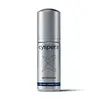Musely The Spot Cream Versus Cyspera Neutralize
What's inside
What's inside
 Key Ingredients
Key Ingredients

 Benefits
Benefits

 Concerns
Concerns

 Ingredients Side-by-side
Ingredients Side-by-side

Hydroquinone 12%
StabilisingNiacinamide 2%
SmoothingHydrocortisone 1%
Glycerin
HumectantAlcohol Denat.
AntimicrobialSodium Bisulfate
BufferingBHT
AntioxidantAcrylates/C12-22 Alkyl Methacrylate Copolymer
Aluminum Starch Octenylsuccinate
AbsorbentBis-Vinyldimethicone/Bis-Isobutyl PPG-20 Crosspolymer
EmollientCaprylic/Capric Triglyceride
MaskingCarthamus Tinctorius Seed Oil
MaskingCeteth-20
CleansingCetyl Alcohol
EmollientCyclohexasiloxane
EmollientCyclopentasiloxane
EmollientDicaprylyl Ether
EmollientDimethicone
EmollientDimethyl Isosorbide
SolventDisteardimonium Hectorite
StabilisingGlyceryl Stearate
EmollientIsodecyl Neopentanoate
EmollientIsododecane
EmollientIsopropyl Palmitate
EmollientLaureth-12
EmulsifyingLecithin
EmollientOzokerite
Emulsion StabilisingPEG-75 Stearate
Petrolatum
EmollientPolysilicone-11
Potassium Sorbate
PreservativePropylene Carbonate
SolventSilica
AbrasiveSilica Silylate
EmollientSodium Lauryl Sulfoacetate
CleansingSorbic Acid
PreservativeSteareth-20
CleansingTitanium Dioxide
Cosmetic ColorantTriethoxycaprylylsilane
Hydroquinone 12%, Niacinamide 2%, Hydrocortisone 1%, Glycerin, Alcohol Denat., Sodium Bisulfate, BHT, Acrylates/C12-22 Alkyl Methacrylate Copolymer, Aluminum Starch Octenylsuccinate, Bis-Vinyldimethicone/Bis-Isobutyl PPG-20 Crosspolymer, Caprylic/Capric Triglyceride, Carthamus Tinctorius Seed Oil, Ceteth-20, Cetyl Alcohol, Cyclohexasiloxane, Cyclopentasiloxane, Dicaprylyl Ether, Dimethicone, Dimethyl Isosorbide, Disteardimonium Hectorite, Glyceryl Stearate, Isodecyl Neopentanoate, Isododecane, Isopropyl Palmitate, Laureth-12, Lecithin, Ozokerite, PEG-75 Stearate, Petrolatum, Polysilicone-11, Potassium Sorbate, Propylene Carbonate, Silica, Silica Silylate, Sodium Lauryl Sulfoacetate, Sorbic Acid, Steareth-20, Titanium Dioxide, Triethoxycaprylylsilane
Water
Skin ConditioningGlycerin
HumectantLactic Acid
BufferingDecyl Glucoside
CleansingPentylene Glycol
Skin ConditioningCocamidopropyl Betaine
CleansingSodium Hydroxide
BufferingArginine
MaskingMaltooligosyl Glucoside
Skin ConditioningHydrogenated Starch Hydrolysate
HumectantLactobionic Acid
BufferingParfum
MaskingHydroxyethylcellulose
Emulsion StabilisingPotassium Sorbate
PreservativeAlpha-Glucan Oligosaccharide
CleansingPolymnia Sonchifolia Root Juice
Skin ConditioningMaltodextrin
AbsorbentCentella Asiatica Leaf Extract
Skin ConditioningLinum Alpinum Flower/Leaf/Stem Extract
Skin ConditioningDisodium Phosphate
BufferingSodium Phosphate
BufferingLactobacillus
Skin ConditioningPolysorbate 60
EmulsifyingCitric Acid
BufferingWater, Glycerin, Lactic Acid, Decyl Glucoside, Pentylene Glycol, Cocamidopropyl Betaine, Sodium Hydroxide, Arginine, Maltooligosyl Glucoside, Hydrogenated Starch Hydrolysate, Lactobionic Acid, Parfum, Hydroxyethylcellulose, Potassium Sorbate, Alpha-Glucan Oligosaccharide, Polymnia Sonchifolia Root Juice, Maltodextrin, Centella Asiatica Leaf Extract, Linum Alpinum Flower/Leaf/Stem Extract, Disodium Phosphate, Sodium Phosphate, Lactobacillus, Polysorbate 60, Citric Acid
 Reviews
Reviews

Alternatives
Ingredients Explained
These ingredients are found in both products.
Ingredients higher up in an ingredient list are typically present in a larger amount.
Glycerin is already naturally found in your skin. It helps moisturize and protect your skin.
A study from 2016 found glycerin to be more effective as a humectant than AHAs and hyaluronic acid.
As a humectant, it helps the skin stay hydrated by pulling moisture to your skin. The low molecular weight of glycerin allows it to pull moisture into the deeper layers of your skin.
Hydrated skin improves your skin barrier; Your skin barrier helps protect against irritants and bacteria.
Glycerin has also been found to have antimicrobial and antiviral properties. Due to these properties, glycerin is often used in wound and burn treatments.
In cosmetics, glycerin is usually derived from plants such as soybean or palm. However, it can also be sourced from animals, such as tallow or animal fat.
This ingredient is organic, colorless, odorless, and non-toxic.
Glycerin is the name for this ingredient in American English. British English uses Glycerol/Glycerine.
Learn more about GlycerinPotassium Sorbate is a preservative used to prevent yeast and mold in products. It is commonly found in both cosmetic and food products.
This ingredient comes from potassium salt derived from sorbic acid. Sorbic acid is a natural antibiotic and effective against fungus.
Both potassium sorbate and sorbic acid can be found in baked goods, cheeses, dried meats, dried fruit, ice cream, pickles, wine, yogurt, and more.
You'll often find this ingredient used with other preservatives.
Learn more about Potassium Sorbate